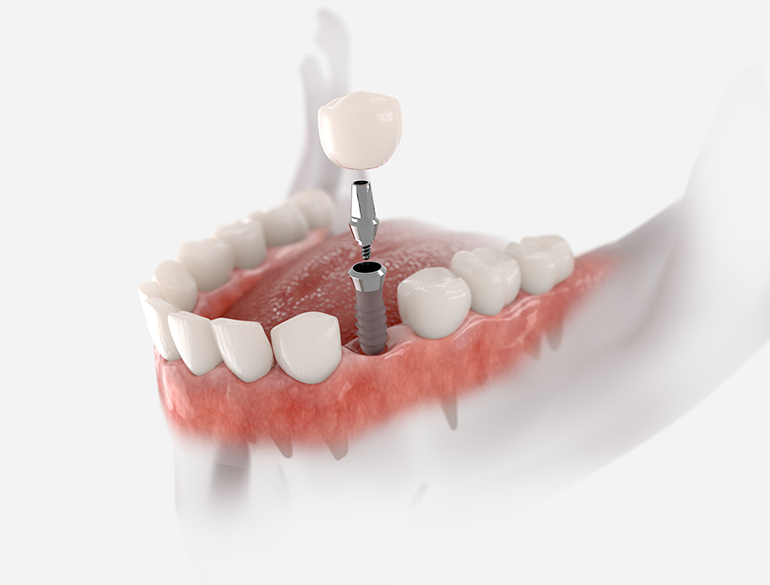A Biased View of Dental Sense
A Biased View of Dental Sense
Blog Article
Getting The Dental Sense To Work
Table of ContentsAbout Dental SenseSome Known Details About Dental Sense 10 Simple Techniques For Dental SenseFacts About Dental Sense Uncovered
are medical tools operatively dental implanted into the jaw to bring back an individual's capability to eat or their appearance. They give assistance for artificial (fake) teeth, such as crowns, bridges, or dentures. When a tooth is shed due to injury or disease, a person can experience issues such as quick bone loss, faulty speech, or modifications to eating patterns that lead to discomfort.Oral dental implant systems are composed of a dental implant body and dental implant joint and might additionally include an abutment addiction screw. Wisdom tooth cavity. The dental implant body is surgically placed in the jawbone instead of the tooth's origin. The dental implant joint is normally affixed to the dental implant body by the abutment fixation screw and prolongs with gum tissues right into the mouth to sustain the connected fabricated teeth
(https://www.intensedebate.com/people/dentalsense1)Framework of The Oral Implant System picking dental implants, talk to your dental copyright regarding the possible benefits and risks, and whether you are a candidate for the procedure. Points to take into consideration: Your overall wellness is an essential variable in establishing whether you are a good prospect for oral implants, how long it will take to heal, and for how long the implant might remain in place.
Smoking cigarettes might impact the healing procedure and reduce the long-term success of the implant. The healing process for the dental implant body may take a number of months or longer, during which time you typically have a short-term abutment in area of the tooth. the oral implant procedure: Thoroughly adhere to the oral health instructions provided to you by your oral supplier.
Dental Sense Fundamentals Explained
Implant failure can result in the requirement for one more procedure to deal with or change the dental implant system. Recovers the capacity to chew Restores cosmetic appearance Assists keep the jawbone from shrinking because of bone loss Maintains the health and wellness of the bordering bone and gums Helps keep surrounding (nearby) teeth steady Enhances top quality of life Damages to bordering natural teeth during dental implant positioning Injury to the surrounding cells throughout surgery, such as sinus opening Injury during surgical procedure (as an example, crack of surrounding jawbone) Insufficient function, such as really feeling like the teeth do not bite with each other generally A sensation that the tooth hangs or twisting in area arising from an abutment screw loosening Implant body failure (looseness of the dental implant body) as a result of systemic infection, which might be most likely in people with unchecked diabetes mellitus due to regional infection in bone and gum tissues supporting the implant body as a result of postponed recovery, which might be more probable in patients who smoke Difficulty cleaning up the gums around the implant, causing poor oral hygiene Untreated periodontal illness Post-surgical numbness as a result of nerve impingement or damages Constantly notify healthcare suppliers and imaging service technicians that you have oral implants before any type of magnetic vibration imaging (MRI) or x-ray treatments.
FDA is not familiar with any adverse events reported for MRI or x-ray procedures with oral implants. Oral implants systems are commonly made from products that comply with international consensus criteria of the International Company for Standardization (ISO) or ASTM International. These criteria have information of what makes a safe product.

An oral implant is a framework that replaces a missing out on tooth. With screw-like devices, the cosmetic surgeon inserts a dental implant right into the jawbone, and it acts as an anchor for an artificial tooth, called a crown. A device called a joint connects the artificial tooth to the oral implant. The crown is personalized to fit the individual's mouth and match the color of their teeth.
Some Known Details About Dental Sense
Some individuals are not eligible for oral implant surgery. It is for dental doctors to operate individuals with: acute illnessuncontrollable metabolic diseasebone or soft cells condition or infectionIf these concerns are dealt with, a person can have the surgery. In, dental doctors refrain from operating on individuals with: If individuals with any one of the above undertake dental implant surgical pop over to this web-site procedure, there is a greater risk of the implant falling short.

Oral implant surgical treatment is a personalized process. It's not the same for everyone. The complying with gives a general introduction of what you can anticipate your dental expert, dental cosmetic surgeon, periodontist or prosthodontist to do: Put the dental implant surgically. Offer you time to recover. Affix the blog post and last crown, bridge or denture.
Next, your surgeon will very carefully place the oral implant right into your jaw. Lastly, your doctor will certainly rearrange your gums and shut the cut with stitches. If your implant is near the front of your mouth, your dental practitioner will certainly make a short-term tooth for you to wear till you recover. In this way, you will not have a gap in your smile while you recover.
The Buzz on Dental Sense
Your copyright can tell you what to anticipate in your circumstance. During the recovery stage, your jawbone must fuse to the dental implant. This procedure, called osseointegration, is important for stability and lasting success. This procedure can take anywhere from three to 9 months. In some cases, it might take longer.
As soon as your dental implant heals, your dental expert can connect the abutment (tiny connector message) and your final restoration (crown, bridge or denture). This typically takes concerning one hour to complete and might require a second small surgical procedure. You shouldn't feel any discomfort throughout your dental implant treatment due to the fact that your service provider will certainly utilize medication to numb your gums.
Report this page